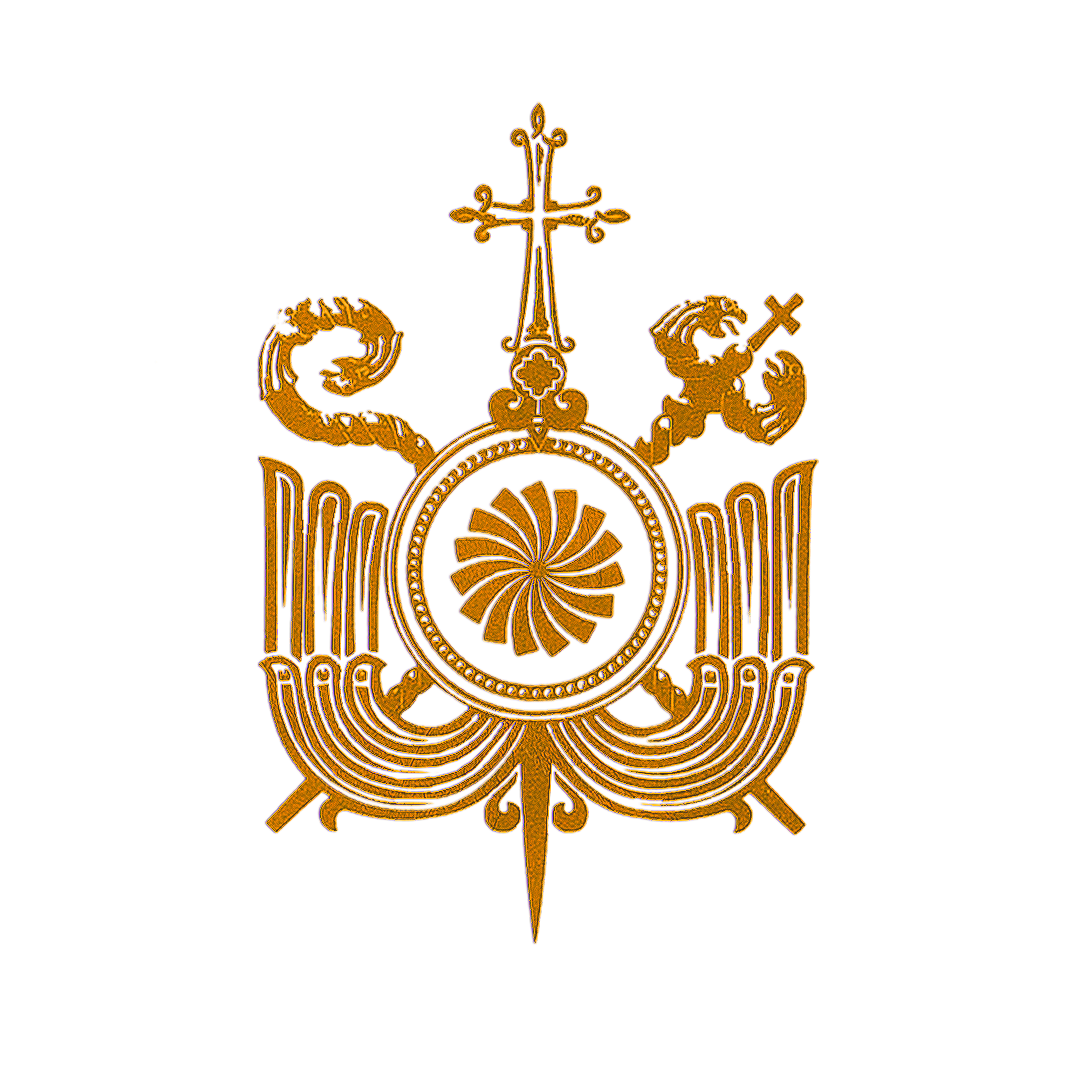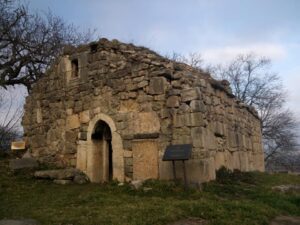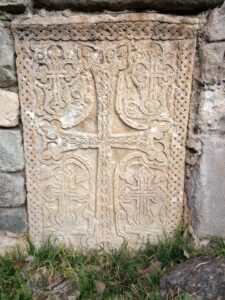Church of St. Stepanos
Hadrut Province, Togh village
The Church of St. Stepanos is located in the southwestern part of the village of Togh, Hadrut region, not far from a large cemetery. On the site of the present church there was an older building, supposedly a pagan temple, which was completely destroyed, and the stones were partially used in the construction of the new church.
Melik Yegan and his son only repaired the roof of the church. This is evidenced by Bishop Makar Barkhudaryants.
«Թվ․ ՌՃՂԶ (1747)։ Յիշատակ է սուրբ ըՍտեփանոս եկեղեցուս գլուխն, որ նորոգեց մելիք Եգան ր որդին մելիք Եսային։ Յիշատակ է հոգւոյ»:
Within the walls of the temple, there are 51 khachkars decorated with various sculptures. They are not only diverse but also make up a chronologically remarkable collection of khachkars. Here you can find “primitive” type of khachkars and decorative khachkars. Most of them have lithographic inscriptions.
The Church of St. Stepanos is a rectangular arched hall. The Sacristies are located in the eastern part. The walls are made of rough stone left over from a destroyed church. An unusual sculptural pillar divides the hall into two unequal parts (the northern part is narrower). There are many tombstones in the narrow part. According to the plan, a rectangular hall measuring 12 x 7.8 meters is crowned with niches of stage tents on the east side.
The facade walls are made of rough stone, while the vaults, entrance and windows are made of large cut stone. The fragments used in the masonry are a milky box (fragments of a toothed cornice, sculptural belt, khachkars, gravestones). Due to the sloping relief, the church hall does not rise above the yard mark, it even partially sticks into the ground to a depth of 1.5 meters. This circumstance is explained by the fact that the outside of the temple was connected by a secret underground passage.
Around the church, on the top of the hill and on the slopes, there are hundreds of ancient tombstones depicting horsemen, soldiers, hunters, musicians, scenes of wine distribution, which occupy a special place among such monuments with their thematic diversity and art.
It is believed that Saint Stepanos was once a monastery complex. This is evidenced by the change in the southern wall of the prayer hall. The construction of the apses did not hide the foundation of the former domed church. Their traces can be seen both inside and outside the building, in the space that forms an extension of the southern front wall of the church. The current prayer hall, in terms of its dimensional composition, is compared to the vestibule of Gtchavank.
The walls of the monastery church are inset with over 50 khachkars and gravestones from the early Christian era. There is also a hidden underground passage from church to outside of the monastery walls.
Bibliography
«Diocese of Artsakh» (2009), Erevan, 411 pp.






